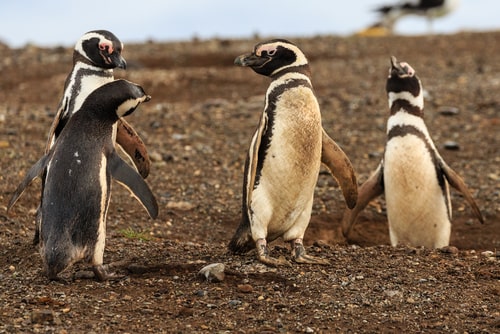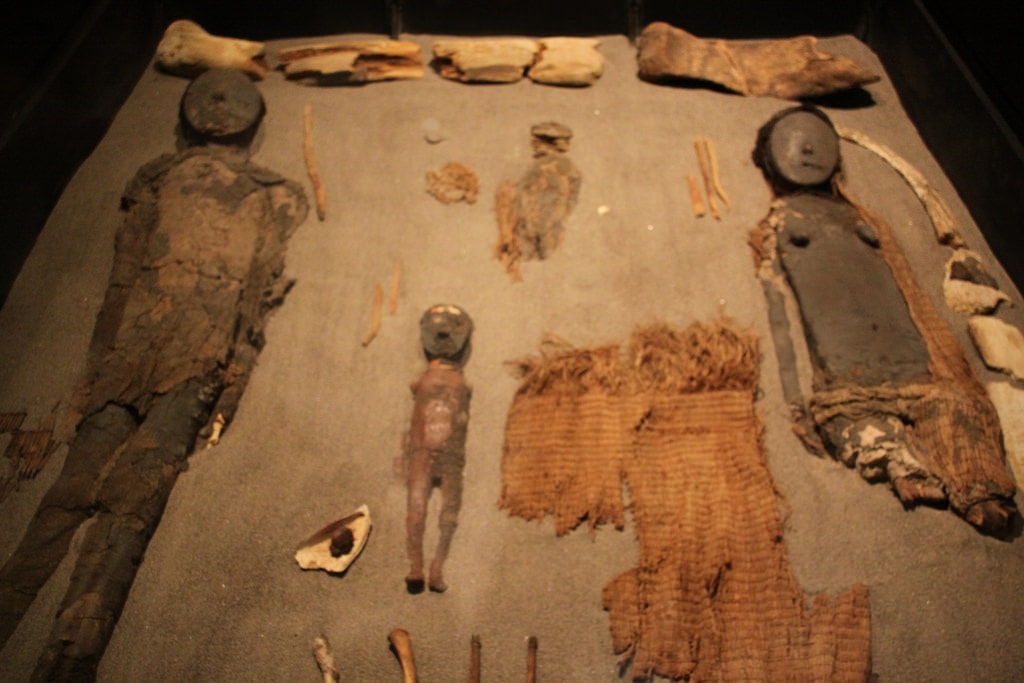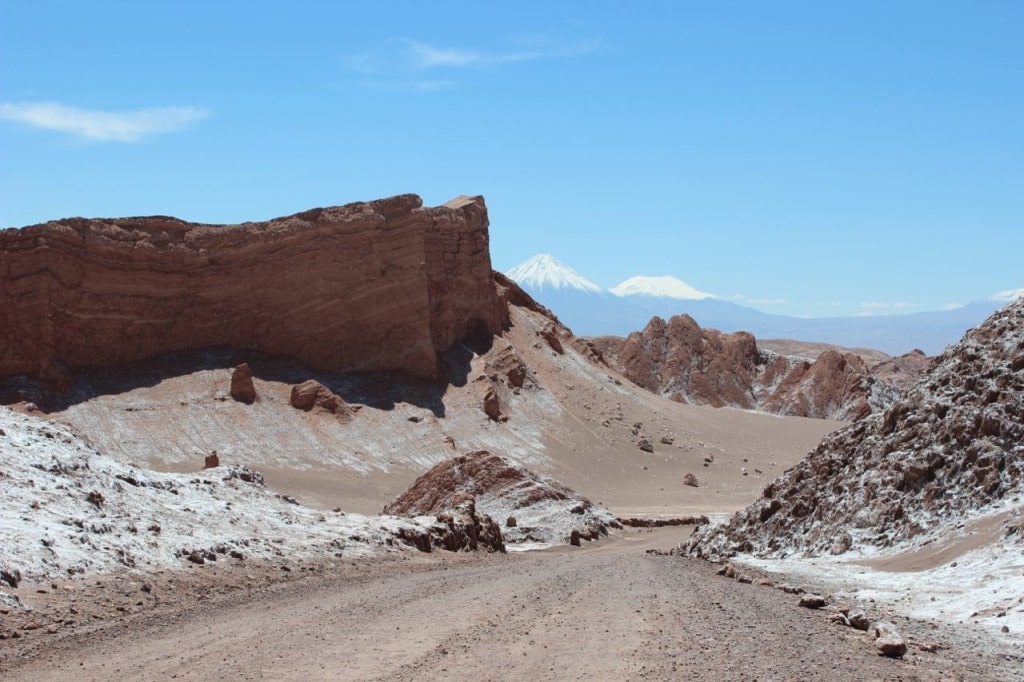Last updated on September 29th, 2022
Chile, officially the Republic of Chile, is a country in South America. It has an area of 756,102 square km. Santiago is its capital and largest city. Spanish is its national language and Peso (CLP) is its official currency. Its three bordering countries are Argentina, Peru, and Bolivia. With these 50 facts about Chile, let us learn about its history, geography, people, culture, wildlife, environment and much more.
50 Interesting facts about Chile
1. Chile is the longest country in the world from north to south at 2,653 miles.[1]
2. Ferdinand Magellan was the first European to set foot on what is now Chile. He visited the land in 1520 during his attempt to circumnavigate the globe.[44]
3. Monte Verde is the oldest-known site of human habitation in the Americas. The widely accepted date for early occupation at Monte Verde is 16,500 B.C.[45]
4. Chile is the world’s fifth-largest wine exporter, with 100 wineries.[3]
Flag of Chile

5. Husbands and wives in Chile do not share a same, common last name. Wives use their maiden names. Use of common last names for male and female counterparts is reserved for brothers and sisters.[4]
6. When greeting or leaving, cheek kisses are exchanged between men and women and between women. Both the individuals gently touch cheek to cheek and send kiss in the air. Men exchange handshakes.
7. Chileans often reserve strong opinion out of politeness. Quickly asserting an opinion is frowned upon.
8. One of the world’s lowest divorce rates is in Chile. Divorce was only legalized in 2005.[5]

9. Pisco is Chile’s national drink. It is home grown in the country and made with a mixture of a few different ingredients. They use Coca-Cola to form Piscola. Lemon juice, ice, sugar, and beaten egg whites are used to make Pisco sour, which is the most common version of the national drink.[6]
10. A variety of endangered candelabra cactus which can reach heights up to 5 m is found in Chile. The country is home to more than 20 different types of cacti and succulents. Interestingly, these plants survive on moisture absorbed from the ocean fog.[39]
11. More than half of the country’s plants and animals are found nowhere on earth. Of its 5,100 species of flora and fauna, more than 2,500 are endemic.[41]

12. You can also find the world’s driest desert – the Atacama – in Chile. This place has not seen even a single drop of rain since record-keeping began.[7]
13. The largest anthropomorphic figure in the world is also located in Chile at Cerro (119 m high).[8]
14. Chile hosted the 1962 FIFA World Cup, and tennis is their most successful sport.[9]
Chile on the map
15. Fernando Gonzalez is a famous tennis player from Chile.[10]
16. Since 1967, it is mandatory to hang the Chilean flag in a proper condition from every public building. Failure to abide by the regulation can lead to fines of up to 40,000 pesos.[11]
17. Chile’s Biblioteca Nacional (National Library), containing 1.8 million volumes, is the largest national library of a Spanish-speaking country outside of Spain.[12]

18. Many of Chile’s more than 1300 volcanoes can be active. This is a scaring fact about Chile.[13]
19. You can spot 4000-year-old trees in Chile’s southern region. They are mostly of the amazingly long-lived Alerce tree species.[14]
20. The biggest earthquake ever recorded on earth, measuring 9.5 on the Richter scale, hit Chile in 1900. The catastrophe killed more than 1500 people and left 2000 homeless.[15]
21. Chile was hit by an earthquake again in 2010, this time with a magnitude of 8.8. However, not many people were killed. At least 1.5 million people were displaced due to the natural disaster, though. The country has strict building codes in urban areas to prevent loss of life and property in such scenarios.[16]
22. Puerto Williams in Chile is the southernmost village in the world. However, others dispute this because of the town’s small size and population in favor of Ushuaia or Punta Arenas.[17]

23. One of the highest lakes above sea level (4520 m), Lake Chungara, is in Chile. It is the 31st highest lake in the world.[18]
24. Chile is a conducive place for astronomical observations. Astrologers from around the world come to the country to make their observations as there are more than 300 nights of clear weather available in the Norte Grande part of Chile.[19]
25. Chile gained independence from Spain on 18 September 1810.[20]
26. In August 2010, the collapse of the San Jose mine in Chile caused the trapping of 33 miners 2000 feet below ground. Rigorous, safety-conscious efforts were made to successfully retrieve the affected miners. A small borehole was drilled by rescuers to provide food, liquids, lights, and send notes to and from the mine. All of the trapped miners were successfully rescued after almost 70 days.[21]
27. Chileans refer to their land as a “country of poets.” They have two Nobel Prize winners in Literature: Gabriela Mistral – 1945, (she is also depicted on 5,000 peso bank notes) and Pablo Neruda – 1971.[22]

28. The world’s largest swimming pool is in Chile. It is 1000 yards long, 20 acres in area and 115 feet deep. This giant pool holds 66 million gallons of seawater. Remember: this was not a cheap pool to build. It took five years and one billion U.S. dollars; its annual maintenance cost is close to two million U.S. dollars.[23]

29. Penguins are found in Chile, in addition to Antarctica. With almost 12,000 breeding pairs in the country, ‘Humboldt Penguins’ can be seen on the north coast of Chile.[24]
30. At 6435 km in length, the Chilean coastline is one of the world’s longest. And it is also one of the worlds narrowest – with a width of just over 200 km.[25]
31. Chile is home to the oldest ever known mummy. It was a ‘Chinchorro mummy’ found in the Camarones Valley in 5050 BC. To date, 282 such mummies have been found in the country. And you thought Egypt was the home to the world’s oldest mummies! An interesting fact?[26]

32. Chile has six UNESCO World Heritage Sites: the Churches of Chiloé, the Historic Quarter of the Seaport City of Valparaíso, Humberstone and Santa Laura Saltpeter Works, Rapa Nui National Park and the Sewell Mining Town.[27]
33. The region between the city of Calama and San Pedro de Atacama is called the ‘Moon Valley.’ It is so called because it resembles the ‘lunar landscape’ to a large extent.[28]

34. Chile is almost devoid of poisonous snakes. There are only 2 species of snakes in Chile and both are small and relatively harmless.[29]
35. After Norway, Chile is the world’s second largest producer of salmon. Nearly 60 Norwegian companies are established in Chile.[30]
36. Reportedly, numerous UFOs have been sighted in Chile. The government also sponsors research on UFOs.[31]
37. Chile has one of the highest rates of working hours in the world.[32]
38. It is mandatory for employers and employees both to sign a working contract in the first 15 days of employment; otherwise, a fine is levied.[33]
. . . continue reading on the next page
